Sunday, September 19, 2010
Science
There is a science test planned for this Friday that covers our weather unit. Please have your student review using the vocabulary match cards that were sent home Friday. A written study guide as well as another vocabulary review worksheet will also be sent home for their review. The unit also has a great review in the science book at the end of the unit.
Monday, September 8, 2008
Friday, July 18, 2008
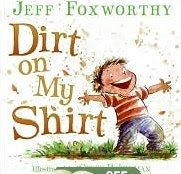 Foxworthy, Jeff, (2008), Dirt on my shirt. New York: HarperCollins. (Illus. by Steve Bjorkman). Grades K-2. Poetry.
Foxworthy, Jeff, (2008), Dirt on my shirt. New York: HarperCollins. (Illus. by Steve Bjorkman). Grades K-2. Poetry.Let's fact it: kids will like this book of poetry because it sounds a lot like a Foxworthy TV special. Following in a Ken Nesbitt-like fashion, these poems will appeal to young readers. Keep it displayed on your poetry shelf.
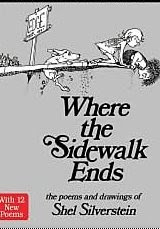 Silverstein, Shel, (2004), Where the sidewalk ends: 30th Anniversary special edition. New York: HarperCollins. Ages 9-12. Poetry.
Silverstein, Shel, (2004), Where the sidewalk ends: 30th Anniversary special edition. New York: HarperCollins. Ages 9-12. Poetry.You will have to beg your students to put this book down. Full of fun and witty poems, even your challenged readers will claim this book as their own. Use this book to hook reluctant readers and keep Silverstein's other books close by.
 Scieszka, J, (1996), True story of the 3 little pigs. New York: Penguin Group. Grades 3 and older. Fiction.
Scieszka, J, (1996), True story of the 3 little pigs. New York: Penguin Group. Grades 3 and older. Fiction.An up-to-date version of a well know fable, this story allows the big bad wolf, Al to tell his side of the story. Of course, he is finally arrested for his misdeeds and sent to the Pig Pen. Be sure to tell your students not to believe everything they read in the newspaper!
 Botermans, J., Tichler, H., (2005), The big brain workout. New York: Sterling Publishers. Non-fiction.
Botermans, J., Tichler, H., (2005), The big brain workout. New York: Sterling Publishers. Non-fiction.Need a book that will hold your student's interest during free time? This book will have students using brain power to answer the questions and solve the puzzles. Good for older children through adults.
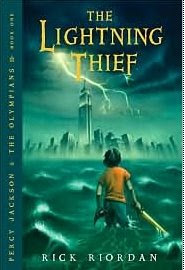 Riordan, R., (2006), The lightning thief. New York: Hyperion/Miramax. Grades 5-9. Fiction.
Riordan, R., (2006), The lightning thief. New York: Hyperion/Miramax. Grades 5-9. Fiction.Students interested in Greek mythology will enjoy this book's mythological characters. The setting, based at a summer camp, does not hold the usual camp activities. Follow Percy on his journey to find the lightning bolt stolen from Zeus and his true self.

Bloor, E., (2006), Tangerine. New York: Harcourt. Age 10. Realistic fiction.
Despite being legally blind, Paul competes against his brother is this book about soccer, blindness, and self-acceptance. An excellent choice as a literature circle selection and a topic that will interest hard to please boys. This is Bloor's first book, look for more to add to your library.
 Thomson, S. L., (2006), Amazing snakes. New York: HarperCollins. Grades 1-3. Non-Fiction.
Thomson, S. L., (2006), Amazing snakes. New York: HarperCollins. Grades 1-3. Non-Fiction.Discover everything you ever wanted to know about snakes in this informative book with interesting photos. A great selection for your classroom library or as a supplement to your science unit. Students are sure to share this books with friends!
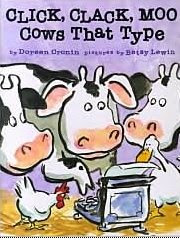 Cronin, D. (2000), Click, clack, moo: Cows that type. New York: Simon & Schuster. ages 5-8. Fiction.
Cronin, D. (2000), Click, clack, moo: Cows that type. New York: Simon & Schuster. ages 5-8. Fiction.What child would not enjoy cows that can type? Primary teachers will use this book as an example of how to work and play well with one another. Intermediate teachers might also read this to introduce the concept of "protest" in social studies.
Wednesday, July 16, 2008
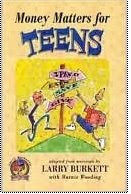 Burkett, L. , Wooding, M., ( 2001). Money matters for teens. New York: Moody Publishers. Middle school. Non-fiction.
Burkett, L. , Wooding, M., ( 2001). Money matters for teens. New York: Moody Publishers. Middle school. Non-fiction.Jut the book to read while teaching students how to manage checking accounts. In today's economy this is a book that matters and will have parents asking to check it out. This gives another selection that joins the teaching of math with language arts.
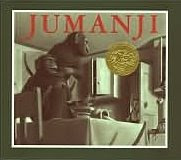
Van Allsburg, C. (1981). Jumanji. New York: Houghton Mifflin. Ages 5-8. Fiction.
Two children find themselves pulled into the the board game they are playing. To end the game and the chaos, they must roll a 12. A delightful story, beautifully illustrated in black and white by Van Allsburg. This books can also be used as a lead into the concept of probability.
Caldecott Winner
Audio version read by Robin Williams available
DVD/Sony
 Young, E. (1996). Lon Po Po: A Red-Riding Hood story from China. New York: Penquin Group. Grades 1-5. Fiction.
Young, E. (1996). Lon Po Po: A Red-Riding Hood story from China. New York: Penquin Group. Grades 1-5. Fiction.Based on the story of Little Red Riding Hood, this version is sure to please your students as they compare and contrast stories. Beautifully illustrated with rich colors and panels, that will stimulate conversation. After reading this, your class will want to compose their own class version of this well known tale.
Tuesday, July 15, 2008
 Bentley, D., (2008). Ten rubber duckies: A wacky quacky counting adventure. New York: Random House. Ages 5-7, Fiction.
Bentley, D., (2008). Ten rubber duckies: A wacky quacky counting adventure. New York: Random House. Ages 5-7, Fiction.Ten ducks racing to the finish line, disappearing from the readers view by hiding behind various objects illustrated on the page. One even quacks. A fun way to reinforce counting with young children. They will want to count and recount the ducks set into the cover.
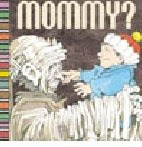
Sendak, M., ( 2006). Mommy?, New York: Scholastic Inc. Ages 4-8. Fiction.
3-D creatures are found inside this book by Maurice Sendak. Words are not needed to tell the story of boy meets monsters. Is he really looking for his mummy? A great story around Halloween for students to look at again and again.
 Harris. R. H., (2004). Don't forget to come back. New York: Candlewick Press. (illus. by Harry Bliss). Grades pre-school -2. Fiction.
Harris. R. H., (2004). Don't forget to come back. New York: Candlewick Press. (illus. by Harry Bliss). Grades pre-school -2. Fiction.Full of threats for her parents, little Sugar just wants her parents to stay at home with her. Thank goodness the babysitter saves the night! Just the right book to read to young children experiencing the same emotions as Sugar.
Found online at Tumblebooks, link is right side of Blog
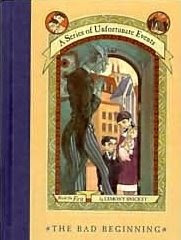 Snicket, L., (1999). The bad beginning: Book the first. New York: Harper Collins. Grades 4-6. Fiction.
Snicket, L., (1999). The bad beginning: Book the first. New York: Harper Collins. Grades 4-6. Fiction.The first book in the collection, A Series of Unfortunate Events, this book introduces readers about the Baudelaire children who go to live with a relative who has his eyes on their fortune. Students will enjoy the "unfortunate events" that unravel in this engaging book.
Audio version read by Tim Curry

Erickson, J.R. , (2007). The case of the booby trapped pickup. New York: Penquin Group. Grades 3-6 . Fiction.
If you have not read any of the Hank the Cowdog series, this will be a treat!
Hank and his friends are always in trouble and your students will laugh out loud and beg you to keep reading as the trouble unfolds.
Available on audio tape, read by John Erickson.
 Speare, E. G., (1984). The sign of the beaver. New York: Random House.
Speare, E. G., (1984). The sign of the beaver. New York: Random House.Grades 5-8. Historical Fiction.
Grown-up responsibilities weigh on 12 year on Matt. Should he stay alone in the wild or join the safety of the Beaver tribe, leaving his family. Full of man versus nature and acceptance of others, this is a must read for intermediate students.
Newbery Honor Award
Available on CD/ Random House Audio
Newbery Honor Award
Available on CD/ Random House Audio
Subscribe to:
Posts (Atom)

